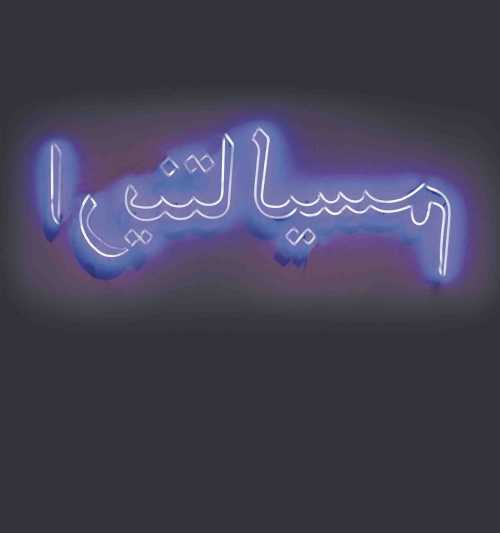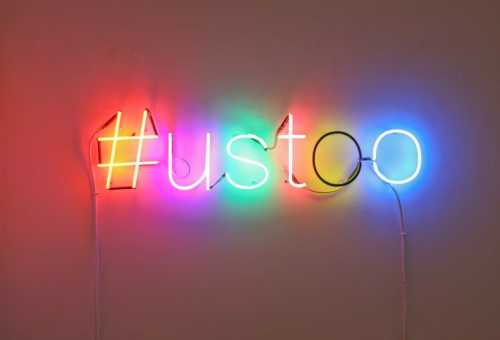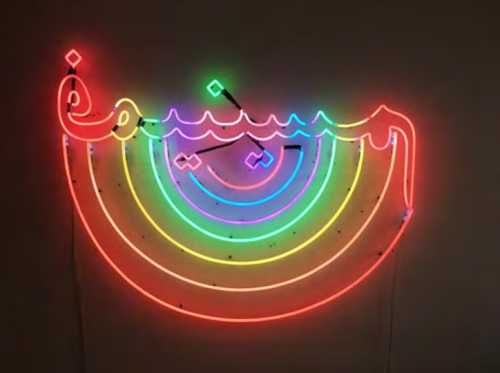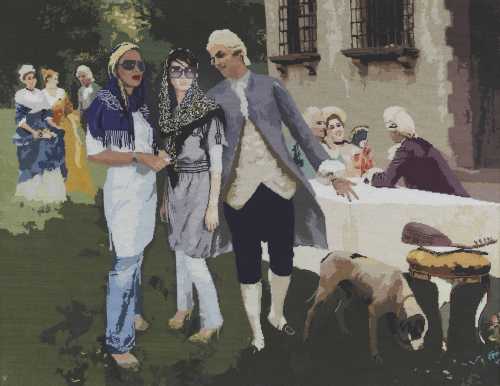- Orientalism 2010
- Neon
- Installation
- 140 * 60 cm
- Editions: 4
- Edition No. 4
Artwork Description
For centuries, Orientalism has been the subject of a controversial debate. It initially referred to the Orient or East, in contrast to the Occident or West. Since the 18th century, "orientalist" has been the traditional term for a scholar of Oriental studies. However "Orientalism" is more widely used as a term in Art History to refer to works of the many 19th century artists, who specialized in "Oriental" subjects, often drawing on their travels to North Africa and Western Asia, and portraying the fantasized women of the East.
In the 20th century, Orientalism became a meaningful chapter in Art History, not only because some of the greatest names incorporated this theme in their oeuvre, but also because it was always a topic of debate. The most recurrent one being based on Edward Said's controversial yet influential publication dated from 1978 Orientalism in which the Palestinian-American scholar's views on the subject would forever redefine the word. He used the term to describe a pervasive Western tradition, both academic and artistic, of prejudiced outsider interpretations of the East, shaped by the attitudes of European imperialism in the 18th and 19th centuries. Half a century later this topic is still being explored. Indeed, Leila Pazooki's featured work is a fantastic contemporary interpretation of it.
The artist spells Orientalism in Farsi, however by reversing the order in which it is written, she plays with the meaning and the symbolism of Orientalism, thus making it confusing and hard to decipher yet adding a humorous sense to it. Arabic and Farsi are usually spelt from right to left: here you can read it only from left to right as such as in the western alphabet. The work could almost be considered as a case of "Occidentalism", a response of the East to Orientalism, which makes the controversial topic fascinating as it would introduce a new dialogue between the East and the West. Her choice of medium is also reminiscent of contemporary art and as such again, it is as if Orientalism has survived through time in Art History.
Leila Pazooki lives in Tehran and Berlin. In her work, she mainly explores the concept of borders and places herself somehow in between the East and the West.
In the 20th century, Orientalism became a meaningful chapter in Art History, not only because some of the greatest names incorporated this theme in their oeuvre, but also because it was always a topic of debate. The most recurrent one being based on Edward Said's controversial yet influential publication dated from 1978 Orientalism in which the Palestinian-American scholar's views on the subject would forever redefine the word. He used the term to describe a pervasive Western tradition, both academic and artistic, of prejudiced outsider interpretations of the East, shaped by the attitudes of European imperialism in the 18th and 19th centuries. Half a century later this topic is still being explored. Indeed, Leila Pazooki's featured work is a fantastic contemporary interpretation of it.
The artist spells Orientalism in Farsi, however by reversing the order in which it is written, she plays with the meaning and the symbolism of Orientalism, thus making it confusing and hard to decipher yet adding a humorous sense to it. Arabic and Farsi are usually spelt from right to left: here you can read it only from left to right as such as in the western alphabet. The work could almost be considered as a case of "Occidentalism", a response of the East to Orientalism, which makes the controversial topic fascinating as it would introduce a new dialogue between the East and the West. Her choice of medium is also reminiscent of contemporary art and as such again, it is as if Orientalism has survived through time in Art History.
Leila Pazooki lives in Tehran and Berlin. In her work, she mainly explores the concept of borders and places herself somehow in between the East and the West.
More lots by Leila Pazooki
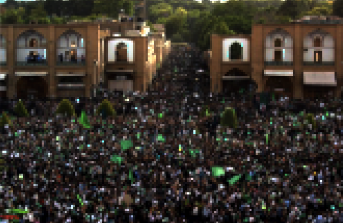
Pixel Diary
Estimation
£2,200
2,683 USD
-
£2,200
2,683 USD
Realized Price
£2,000
2,439 USD
9.091%
Sell at
Sale Date
Magic of Persia
-
30 June 2022
Realized Price
5,960 USD
Min Estimate
5,208 USD
Max Estimate
7,365 USD
Average Artwork Worth
-9.697%
Average Growth of Artwork Worth
Sales Performance Against Estimates
Average & Median Sold Lot Value
2018 - 2022
Performance vs. Estimate
2018 - 2022
Sell-through Rate
2018 - 2022
